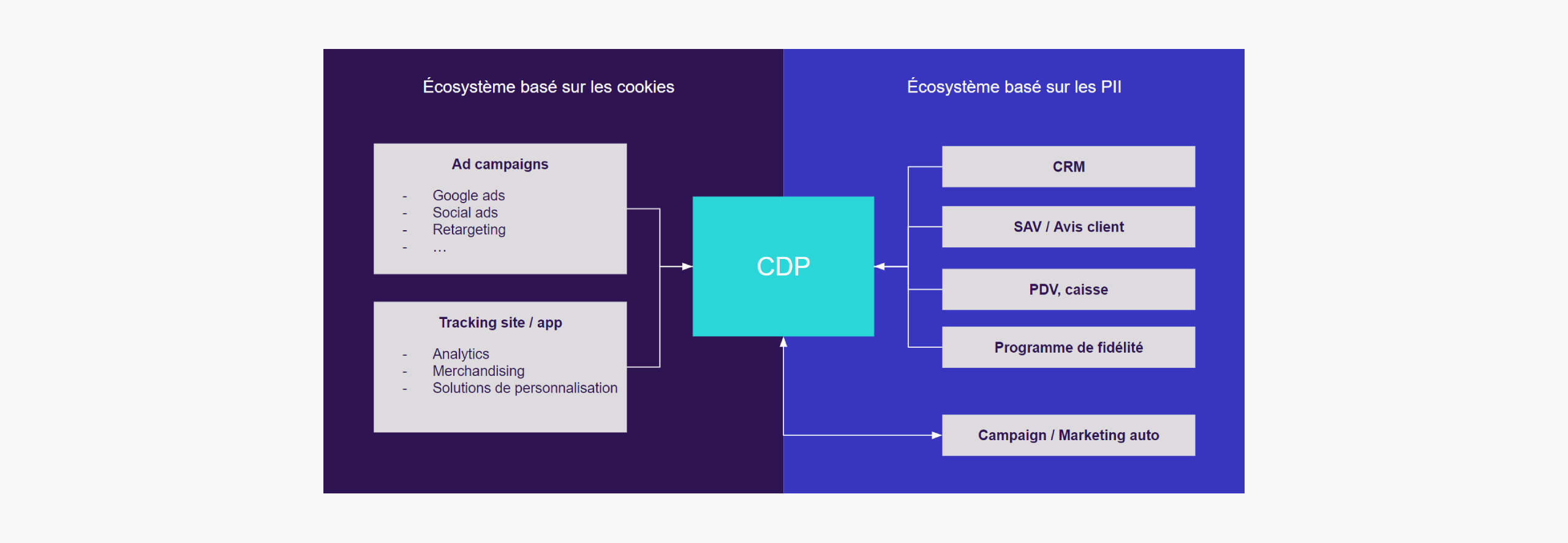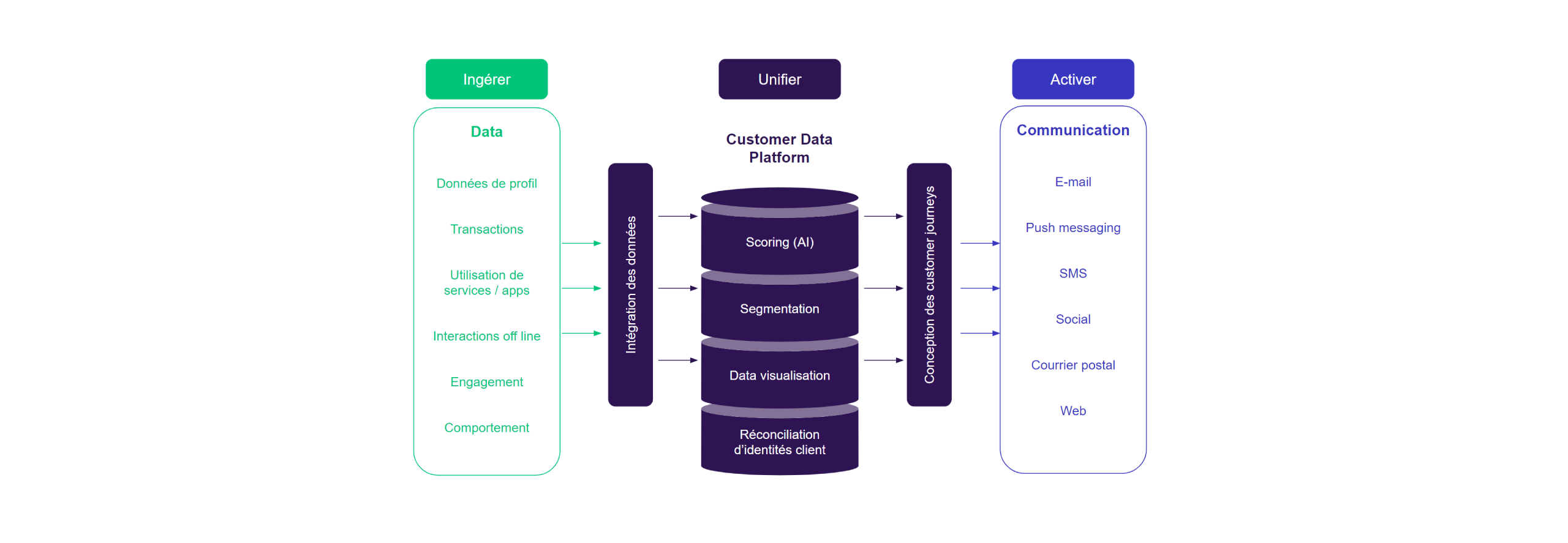The term Customer Data Platform really appeared in the discourse of marketing decision makers in the mid-2010s, following data warehouses and other DMPs. This type of software has gradually established itself, all the more so as first-party customer data has become central to the marketing strategy of companies.
Concretely, what makes the specificity of a CDP, and what is its place in the data infrastructure of a company? How to properly plan the implementation of a CDP? What are the stakes and the concrete contribution of value of the CDP?
The place of CDPs in the midst of company data systems
What is a Customer Data Platform (CDP)?
Let’s start by defining what a CDP is. For this, let’s take the definitions of two benchmark analysis firms for digital solutions: Forester and Gartner.
Forrester defines a Customer Data Platform as a platform that centralizes customer data from multiple sources and makes it accessible to analysis (insight) and customer activation (engagement) systems.
Gartner defines CDP as a technology that unifies a company’s customer data from marketing and other channels, to enable the modeling of customer profiles and to optimize the timing and targeting of messages and offers.
Concretely, we retain from these definitions the following qualities that a CDP must have:
- It is a solution that centralizes customer data from different sources
- It organizes this customer data to make it usable by other systems
- It facilitates the analysis of data (to generate insights) and the relevant exploitation of data for relational animation (in particular, as we will see, thanks to scoring and segmentation functions)
Generally, the CDP is interfaced with a campaign management and marketing automation tool, since one of the uses is to be able to send messages at the right time, and in a personalized way.
What is CDP not, and how is it different from other customer data systems?
Is the CDP an single customer repository?
In a way, yes, since the CDP centralizes customer data that can come from all available sources of the company: both online and offline contact points. CDP gathers this customer data around unique IDs, allowing a 360 customer view. But it does much more than that…
Is CDP just another name for CRM solutions?
The notion of CRM itself is very broad, and can encompass both customer relationship tools for B2B salespeople and relational animation devices used by marketing teams. Considering that CRM is the central tool for companies to create complete customer views and allow their activation via relational channels (commercial prospecting, customer service, etc.), then CDP is a form of CRM tool, but evolved, and rather intended for marketing purposes. The main difference is mainly due to the fact that the so-called “CRM” systems manage the data of prospect or customer contacts identified, generally by an email address or a customer ID. But these systems are often not designed to work in an ecosystem where a reconciliation of contact identities must also include anonymous individuals.
Is the CDP the new DMP of the 2020s?
The DMP, which has become with hindsight the archetype of buzz words linked to data solutions, and generally synonymous with failure for many advertisers: very often, 6-figure setup budgets, for a low value in use , due to too low a volume of data or the absence of fully thought-out use cases. So, is the CDP just a new acronym, a name change to make up for the failure of the CDPs?
No. CDP is a first-party customer data platform, while DMPs gather third-party data. First party data is better controlled, and its lifespan is longer than third party data. The CDP primarily targets CRM uses, while the DMPs target media uses. Finally, the prospect of the end of third-party cookies has greatly complicated the outlook for DMPs.
What data are managed by the CDPs?
Customer Data Platforms, as their name suggests, manage all customer (and prospect) data available to a business. There is no real limit, but generally it starts with:
- customer profile data: customer typology, consumer profile, stated preferences
- CRM data: contact data, sales area, transactions, interactions…
- behavioral data: websites, applications, reactions to messages, content viewed, etc.
Thus, the CDP must make it possible to centralize data associated with cookies (anonymous users), and with identified users (PII = Personal Identified Info).





